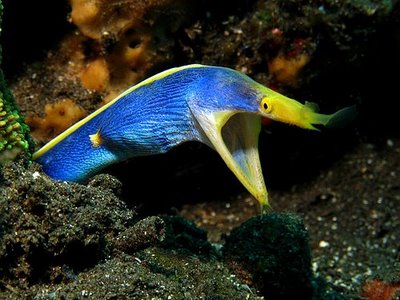Beautiful, isn’t it? 😉

This is called “The Butterfly of the Sea“, also Sea Robin, or Gurnard. (more…)
Beautiful, isn’t it? 😉

This is called “The Butterfly of the Sea“, also Sea Robin, or Gurnard. (more…)
New, interesting alternative for traditional burying was found. 🙂
Say “hi” to Kenny, inbred white tiger. Don’t be mistaken – they are not albino. Those Siberian/Bengal tigers have recessive genetic traits, which makes their fur white and their eyes blue.
 (more…)
(more…)

Colorful, isn’t it? 😉 That animal is called a ribbon eel – which is a pretty appropriate name. But, aside from its visually interesting aspects, it’s nice to know something about their life cycle. (more…)
This is the sandbox tree, but it also has different, more interesing name: “Monkey No-climb” – and that name really fits! That’s because the tree is covered with dangerous thorns, preventing any animal from climbing on its trunk.

Amazing, isn’t it? 🙂 It’s one of the examples of Giant African land snails – they are very popular in Western world, so that they are always confiscated at airports. (more…)
Some interesting facts about very famous Venezuela falls, The Angel Falls. 🙂

1. Their names come from an American pilot, Jimmy Angel, who crashed his plane near the top of the falls. (more…)
Hello Greenzoners! Some another interesting facts – this time about global warming. 😉
Did you know that forest fires are now more common in the US?

We recommend you to see this video – top 10 Surprising Global Warming Effects. 🙂
http://www.youtube.com/watch?v=VuH-ThmNUjM
The user hhah92 succesfully answered our previous question about rectangular pupils. Congratulations! 🙂

Yes, octopuses, as well as their cousins squisd and cuttlefish (collectively known as Cephalopods) have rectangular pupils.
The reason of rectangular pupils is the process called convergent evolution… (more…)
Unlike most of animals, goats have rectangular pupils.
We are accustomed to see pupils in eyes as round objects, just as our pupils. It allows them to see more around themselves (320-340 degrees of vision, while humans have only 160-200 degrees).
Which also means, that they can see better at night. 🙂